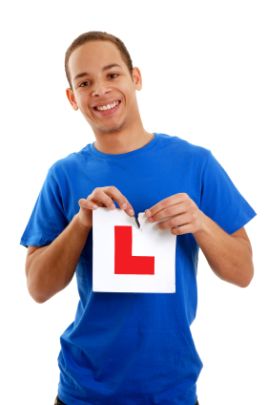What to do at a roundabout
Roundabouts come in all shapes and sizes, but the basic rules that govern roundabouts are simple.
However that doesn't stop people interpreting the rules and indicating and lines in all sorts of odd ways, and unpredictable behaviour or cars suddenly swerving when they realise they are in the wrong entry or exit lane can lead to all sorts of accidents taking place around them.
A mini roundabout is one that is indicated by a blue circular sign with three arrows going around it clockwise. Always remember to give way to the right at a roundabout. That is the key rule!
Some large roundabouts can be quite intimidating, particularly if there are several lanes and it a large roundabout - often you will for instance be in the right hand most lane because you are going to be turning right, but of course when you leave the roundabout you will be leaving to the left.
Therefore to deal with this and the fact that other road users may be chopping and changing lanes, you should ensure that you drive at a slower speed - go at a pace that enables you to take yur time and you should be fine.
If you are approaching a roundabout for the first time then take heart that in most cases the lanes are clearly labelled, and so if you need a particular road it will be marked on the entry to the roundabout. With many roundabouts you can go a certain way from more than one lane, so just ensure that you are in one of the correct lanes.
Related Articles...
What to do if you breakdown at a level crossing
Driving is potentially dangerous, but it is important not to worry about things that could happen when driving but at the same time you should know what to do in the unlikely event that something...
How to book your driving theory test
There is now an online booking system in place that will allow you to book a driving theory test online.
There are also other ways to book a driving theory test: over the phone and you can...
What to do at level crossings
When you are learning to drive you may well not come across a level crossing, depending where you live. But as a driver you certainly will come across level crossings and will need to know how to...
Why new drivers are more likely to be involved in an accident
It is a well known statistic that new drivers are more likely to be involved in accidents, and indeed insurance companies definitely know this as you'll see by comparing premiums as a new driver...
Your vehicle and driving
There is a lot to take in when you are learning to drive and when you are preparing for the driving theory test. Whilst a lot of it is common sense there is a considerable amount of information you...
Overtaking cyclists safely
You need to constantly be on the lookout for cyclists because they are a lot less visible than cars and motor vehicles.
Whilst cyclists should have lights in poor light conditions or in the...
DSA Driving Theory Test
Do not view the DSA Driving Theory Test as something of an inconvenience. Instead view it as a way to develop useful knowledge that could save your life or that of someone else. If that seems like...
Tips on passing your theory test
It is up to each individual who takes a theory test to do the necessary work and preparation to put themselves in the best position to pass the test.
Rather than attempting to 'cram' the night...
Road conditions: dealing with fog
Fogs and mists are much more common at some times of the year than others. Particularly in the mornings and in the Autumn time of the year, fog can be commonplace, but whenever it occurs it is...
The Driving Standards Agency
The Driving Standards Agency has a website at www.dsa.gov.uk.
They are an executive agency within the Department for Transport in the UK.
They deliver tests for theory and practical...
Back to home page of driving theory test questions

